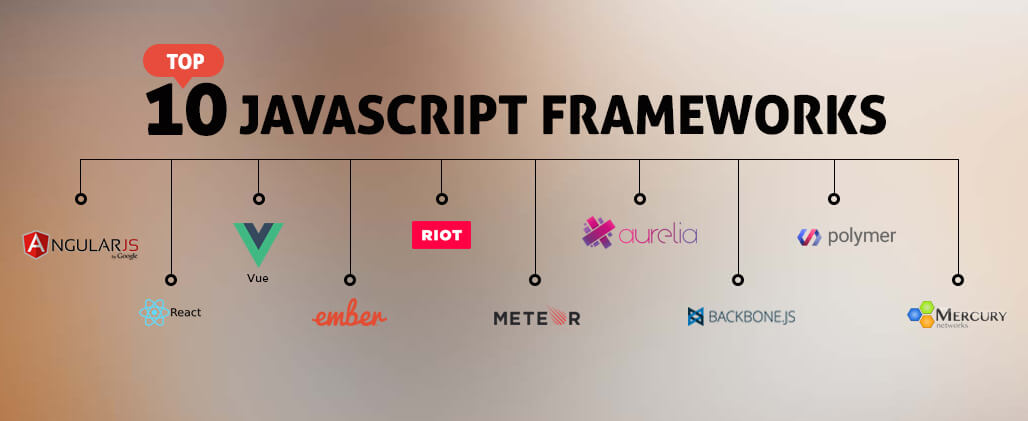Rise by Six: Your Daily Dose of Inspiration
Explore insights and stories that elevate your day.
JavaScript Framework Showdown: Which One Steals the Spotlight?
Discover the ultimate battle of JavaScript frameworks! Uncover which one reigns supreme and transforms your web development game.
The Evolution of JavaScript Frameworks: A Comparative Analysis
Since its inception in 1995, JavaScript has undergone significant transformations, evolving from a simple scripting language into the cornerstone of modern web development. As web applications became more complex, various JavaScript frameworks emerged, each aiming to simplify development processes and improve performance. Initially, frameworks like jQuery facilitated DOM manipulation, but as websites grew in complexity, frameworks such as AngularJS and React were introduced to offer more structured approaches to building user interfaces. This evolution not only underscores the growing importance of JavaScript in web development but also highlights the diverse needs of developers for scalability and maintenance.
Today, the landscape of JavaScript frameworks is more vibrant than ever, with choices ranging from Vue.js to Next.js, each catering to different project requirements. Vue.js emphasizes simplicity and ease of integration, making it popular among smaller projects, while Next.js takes server-side rendering and static site generation to new heights. In this comparative analysis, we will explore the key features, benefits, and use cases of these frameworks, providing insights into how developers can choose the right tool for their specific needs while considering factors like performance, community support, and learning curve.

Top 5 JavaScript Frameworks in 2023: Features and Use Cases
As technology continues to evolve, JavaScript frameworks play a crucial role in simplifying the development process and enhancing performance. In 2023, several frameworks stand out for their unique features and extensive use cases. Here are the top five frameworks that every developer should consider:
- React: Developed by Facebook, React is known for its virtual DOM that optimizes rendering, making it ideal for building interactive UIs.
- Vue.js: This progressive framework is praised for its gentle learning curve and flexibility, making it a popular choice for both small and large applications.
- Angular: Backed by Google, Angular provides a comprehensive solution with its powerful CLI tools and rich set of features, suitable for enterprise-level applications.
- Svelte: Svelte takes a unique approach by compiling components at build time, resulting in fast and lightweight applications.
- Next.js: As a React framework, Next.js offers server-side rendering and static site generation, which are highly beneficial for SEO and performance.
When choosing a framework, it’s essential to consider the use cases that align with your project’s needs. For instance, React is frequently used for building single-page applications due to its efficient state management, while Vue.js is often favored for rapid prototyping and small-scale projects. On the other hand, Angular shines in large-scale applications that require a structured architecture. Svelte is perfect for developers looking to create fast-loading apps without the overhead associated with traditional frameworks. Lastly, for those focused on SEO and performance optimizations, Next.js is the go-to choice, providing built-in features that cater directly to these aspects. Choosing the right framework can significantly impact your development workflow and the overall success of your application.
JavaScript Framework Face-Off: Which One is Right for Your Project?
When it comes to choosing the right JavaScript framework for your project, understanding the specific needs of your application is crucial. Each framework comes with its own strengths and weaknesses, making it essential to evaluate what features align best with your objectives. For instance, if you're developing a large-scale enterprise application, frameworks like Angular or React may provide the robust structure and component-based architecture required for such tasks. On the other hand, if you're building a simpler website or application, lighter frameworks like Vue.js could offer a faster development time with less overhead.
Consider the learning curve and community support when selecting a JavaScript framework. A well-established framework like React boasts an extensive ecosystem of libraries and a vibrant community, meaning you’ll find abundant resources and third-party integrations. Conversely, newer frameworks might offer innovative features but come with less documentation and community support. Ultimately, the best choice will hinge on your team’s expertise, project timeline, and future scalability needs. By carefully weighing these factors, you'll position your project for success.